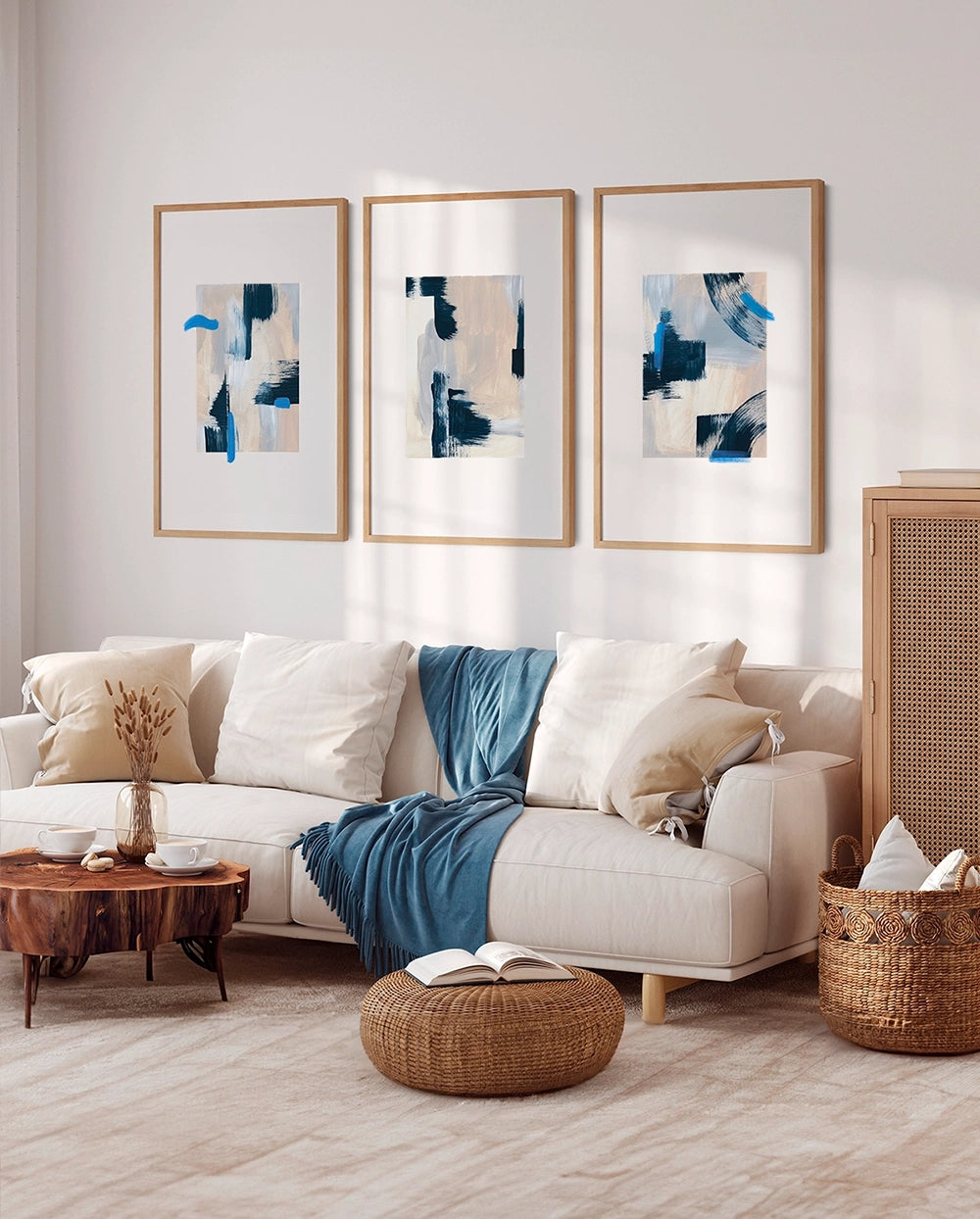We delve into the figure of the Dutch painter for whom the Reina Sofía Museum is holding a retrospective that should have been held last May. From the founding of the magazine 'De Stijl' to his own board game.
Until March 1, 2021, you can visit the Mondrian and De Stijl exhibition at the Reina Sofía Museum in Madrid (the most expensive exhibition in the Spanish art gallery, as journalist Peio H. Riaño explained in a Twitter thread ) and this is perhaps the best time to review some curiosities about the brilliant painter from the Netherlands, who was born in the Dutch municipality of Amersfoort on March 7, 1872 and died, as an emigrant, 71 years later in New York due to pneumonia.
1. A strict education against his passion for art.
If it had been up to his parents, the teacher Pieter Cornelis Mondriaan and his wife, Johanna Christina de Kok, their second child (of five) would never have picked up a paintbrush in his life. Not only were they severely strict, but they were extremely religious and expected the young painter's apprentice to pursue a clerical career according to their dictates.
Belonging to the Calvinist church (a branch of Protestant Christianity), Pieter and Johanna insisted so much that Mondrian had to convince them that he would study art to be a teacher. However, teaching did not fulfill him . This conflicted in his mind with the idea of not disappointing his parents. He found the solution by studying theosophy , a doctrine that stipulated that the evolution of the individual begins with his journey and within that journey art would have its place.
2. From frustrated impressionism to successful neoplasticism.
Although the works that have made him a reference in the art world are undoubtedly his “Compositions” , focused on geometric and minimalist abstraction, Piet Mondrian has experimented with various pictorial styles until he found the one that catapulted him to fame, neoplasticism. In the beginning, his painting was greatly influenced by naturalism and impressionism , focusing his paintings on Dutch landscaping with a clear reference such as his compatriot Vincen Van Gogh .
Later he traveled to Paris (1912) , being impressed by the cubism and earthy colors of Picasso and Braque, which marked his first initiation into the world of abstraction. In fact, he returned to his country and in just two years he developed a new concept of abstraction, neoplasticism , a movement focused on a new approach to the plastic arts, reducing art to its minimum expression.
This evolution that the Dutch painter experienced can be clearly observed in a series of paintings painted by him that cover the same motif, a tree, but presented in different styles.
3. The political background of Piet Mondrian's work.
The development of the new concept of neoplasticism that Piet Mondrian would promulgate was conceived during 1914 and 1918 , a very turbulent time since World War II was breaking out at the same time. Just as Malevich's art sought a reaction against Revolutionary Russia, Mondrian wanted to leave a political message expressed through his works, betting on equality and the unity of society and despising individualism . To achieve this, he reduced his works to a minimum, using only the primary colors red, blue, white, yellow and black. Furthermore, to achieve the balance of the composition, he used only square and rectangular figures and linear movement .
Neoplasticism means equality because each element, despite differences, can have the same value as the rest
Piet Mondrian
4. He was co-founder of the magazine and subsequent movement De Stijl.
In 1917 Mondrian met another bustling Dutch artist who also had skills as a writer, designer and businessman, Theo van Doesburg . Together they founded the magazine De Stijl (the style ) through which they wanted to promote a new artistic movement that would unify an international style and work towards the formation of a unity between life, art and culture. This movement of great ambition would be centered on the primary colors and neoplasticist forms of Piet Mondrian, so that his concept would serve as a tool and could be applied from architecture to production design in all artistic forms.
5. A Unesco Heritage house, inspired by the work of Mondrian.
The Schröder House (1924) today belongs to UNESCO's list of cultural heritage of humanity, currently being a reference for aesthetic vision and its own architectural style.

6. The influence of Piet Mondrian in the world of fashion.
Now it is easier to see even masks that recreate paintings by the great painter, but its mix with fashion must go back to 1965 when the French designer Yves Saint Laurent turned his Mondrian dress (round neck and sleeveless) into an icon that must be anchored. in a society that saw how the Mod movement was gaining momentum among young people.
In love with art, Saint Laurent understood that Composition II, a composition with blue and red, could be the object of inspiration for an outfit that ended up having an impact thanks to its flat colors and harmony, as well as its embrace of the geometric abstraction that so influenced in Neoplasticism (a movement championed by the Dutchman), they made it appear in important magazines such as Vogue or Life.
7. His indisputable mark on the Bauhaus school.
The famous Bauhaus school was a school founded by Walter Gropius that sought coexistence between architects, designers, craftsmen and artists, in which design was always at the service of functionality. It was in its second stage (1923-1925) in which Mondrian's influence took part in the guidelines of the school, impregnating a multitude of designs conceived at that time with his neoplasticism.
8. The most expensive painting by Piet Mondrian exceeds 43 million Euros.
Thursday, May 14, was, however, an indispensable day in the history of Piet Mondrian's work, since his Composition Number III, with red, blue, yellow and black , from 1929, was awarded for 50.56 million dollars ( about 43 million euros), breaking a record for the Dutch painter that dated back to 2009... and almost doubling it, as it stood at 27.59 million dollars.
9. A house-museum in his hometown to remember the Dutch artist.
For seven years, all those visitors who come to the small town of Winterswijk, in the east of Holland , can enter Villa Mondrian , where the artist lived as a child and explores especially his early paintings (until he was around 20). years) that have nothing to do with his most famous paintings, since the artist began in the world of impressionism until he evolved to his abstract minimalism. In addition, he also keeps some works of his uncle Frits , from whom he received his first art lessons.














Leave a comment
All comments are moderated before being published.
This site is protected by reCAPTCHA and the Google Privacy Policy and Terms of Service apply.